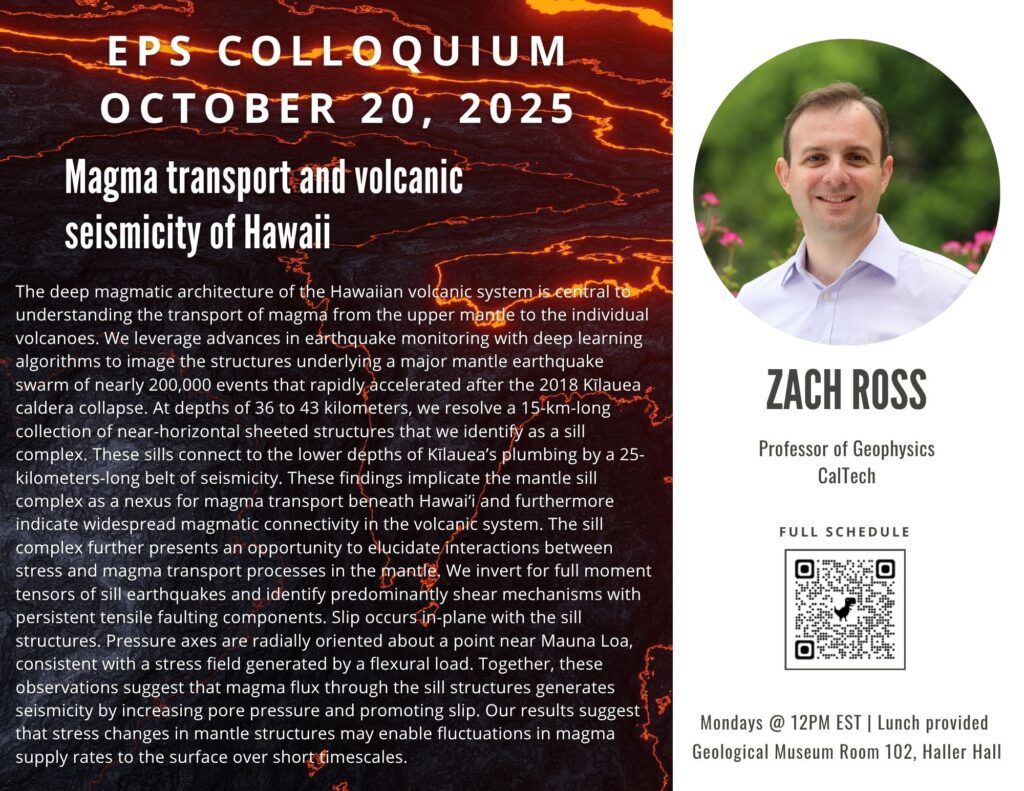EPS Colloquium – Zach Ross, CalTech
Magma transport and volcanic seismicity of Hawaii
The deep magmatic architecture of the Hawaiian volcanic system is central to understanding the transport of magma from the upper mantle to the individual volcanoes. We leverage advances in earthquake monitoring with deep learning algorithms to image the structures underlying a major mantle earthquake swarm of nearly 200,000 events that rapidly accelerated after the 2018 Kīlauea caldera collapse. At depths of 36 to 43 kilometers, we resolve a 15-km-long collection of near-horizontal sheeted structures that we identify as a sill complex. These sills connect to the lower depths of Kīlauea’s plumbing by a 25-kilometers-long belt of seismicity. These findings implicate the mantle sill complex as a nexus for magma transport beneath Hawai‘i and furthermore indicate widespread magmatic connectivity in the volcanic system. The sill complex further presents an opportunity to elucidate interactions between stress and magma transport processes in the mantle. We invert for full moment tensors of sill earthquakes and identify predominantly shear mechanisms with persistent tensile faulting components. Slip occurs in-plane with the sill structures. Pressure axes are radially oriented about a point near Mauna Loa, consistent with a stress field generated by a flexural load. Together, these observations suggest that magma flux through the sill structures generates seismicity by increasing pore pressure and promoting slip. Our results suggest that stress changes in mantle structures may enable fluctuations in magma supply rates to the surface over short timescales.
To be added to the EPS colloquium mailing list, please contact Caroline Carr at carolinecarr@fas.harvard.edu

Zachary Ross research summary: observational studies of earthquakes and faults are limited by our general inability to extract information from seismic datasets at scale. My research program directly addresses these challenges by incorporating technology from artificial intelligence, signal processing, and statistics to gain new insights into these complex phenomena. My work aims to facilitate high-resolution imaging of fault zones; connections between structural properties of faults and the earthquake source process; and a better understanding of the physics governing the evolution of seismicity in space and time.

